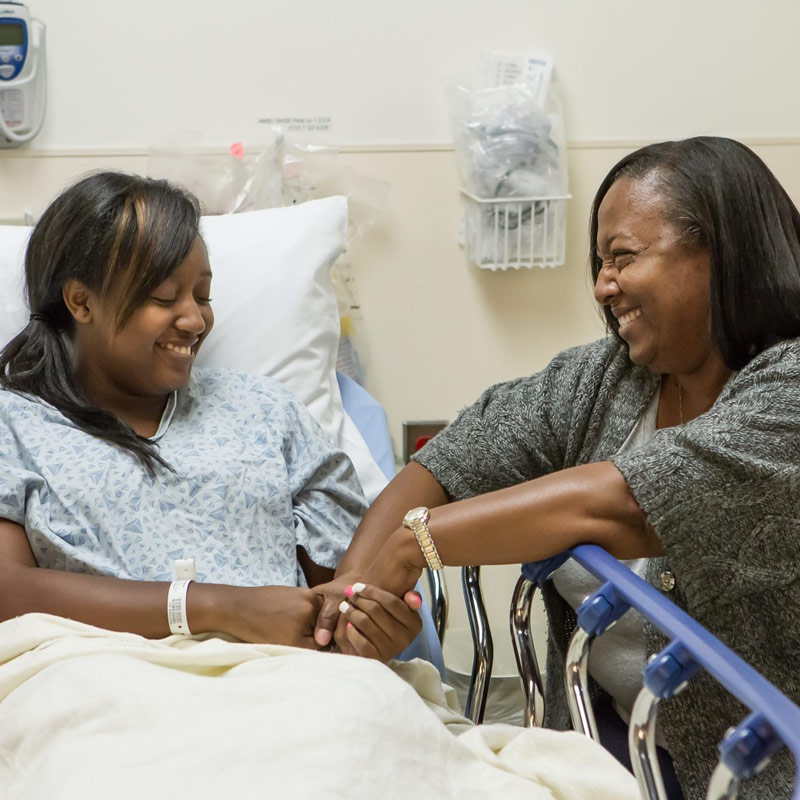According to the American Academy of Pediatrics, appendicitis happens in 7% of all people in America at some time in their life. It happens most often in children or teens.
What is appendicitis?
The appendix is a pouch that sticks out of the colon on the lower right side of the abdomen. While the appendix does not appear to serve any purpose in the body, it can cause major issues if it ruptures.
Often, appendicitis is caused by an infection or by obstruction, where food waste or stool is trapped in the cavity that runs down the appendix. Bacteria then invades rapidly, causing the appendix to inflame and fill with pus.
What are the signs and symptoms of appendicitis?
Generally, the signs of appendicitis begin with an aching pain around the navel, which then shifts to the lower right abdomen. Then the pain increases and gets sharper as the inflammation spreads. The pain usually settles in the lower right abdomen. Location can vary, especially in children. Symptoms also include:
- Nausea and sometimes vomiting
- Loss of appetite
- Low-grade fever that begins after the other symptoms
- Constipation
- Inability to pass gas
- Diarrhea
- Abdominal swelling
How can appendicitis be treated?
Appendicitis needs to be treated with a surgery called an appendectomy, which removes the appendix from the body. An appendectomy may be performed using traditional surgery techniques, but minimally invasive surgery (MIS) utilizes a 2 – 3 small incisions, usually 1.5 – 2 cm long, in a naturally hidden area around the belly button, resulting in a virtually “scarless” surgery.
Single-incision laparoscopic surgery (SILS) is one of that latest minimally invasive surgery techniques, which involves making one tiny incision in the abdomen and inserts surgical instruments and a miniature camera that projects a magnified image of the area onto a television monitor to help guide the surgeons as they remove the appendix. MIS appendectomies are associated with reduced level of post-operative pain, shorter hospital stays and a quicker return to normal activities than when the open approach is used.
How can I make the surgery process easier for my child?
- Find a children’s hospital or a surgery center that specializes in treatment for children and take a tour
- Make sure your child’s surgery center has an expert care team that is trained exclusively in pediatric surgery
- Choose a center with Child Life Specialists who engage in medical play with patients and help reduce any anxiety or fears about surgery
The Surgical Center at Miller Children’s & Women's Hospital Long Beach cares for children from newborns to young adults, who need common or complex surgical treatments in a leading, state-of-the-art pediatric surgical center designed just for kids. Child Life Specialists are available to help explain and guide children through the surgery process. Board-certified pediatric specialty surgeons – trained in the latest minimally invasive surgery techniques – and an expert surgical care team are specially trained to care for children, because children’s surgical needs are different than that of adults.


